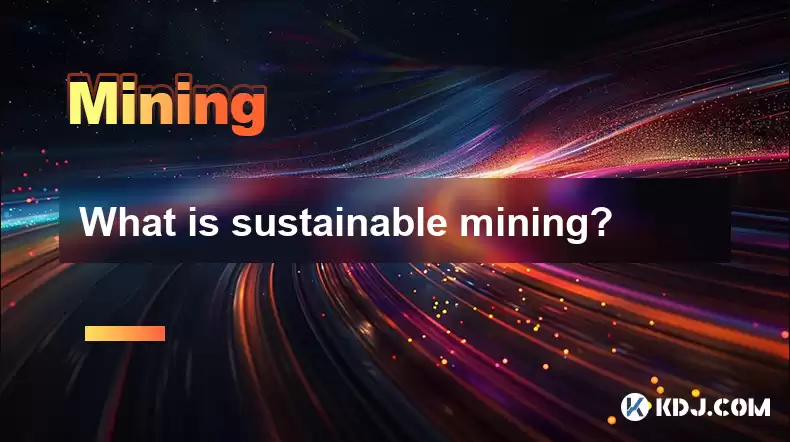-
 Bitcoin
Bitcoin $116400
-0.36% -
 Ethereum
Ethereum $4033
3.40% -
 XRP
XRP $3.302
-1.26% -
 Tether USDt
Tether USDt $1.000
-0.02% -
 BNB
BNB $796.1
1.67% -
 Solana
Solana $177.8
1.89% -
 USDC
USDC $0.9999
0.00% -
 Dogecoin
Dogecoin $0.2314
4.09% -
 TRON
TRON $0.3381
0.14% -
 Cardano
Cardano $0.7989
1.22% -
 Stellar
Stellar $0.4496
-1.84% -
 Chainlink
Chainlink $20.42
9.42% -
 Hyperliquid
Hyperliquid $41.17
0.88% -
 Sui
Sui $3.914
3.77% -
 Bitcoin Cash
Bitcoin Cash $584.7
1.52% -
 Hedera
Hedera $0.2632
-0.54% -
 Avalanche
Avalanche $24.09
3.40% -
 Ethena USDe
Ethena USDe $1.001
-0.02% -
 Litecoin
Litecoin $123.2
1.33% -
 Toncoin
Toncoin $3.318
-0.04% -
 UNUS SED LEO
UNUS SED LEO $8.984
-0.05% -
 Shiba Inu
Shiba Inu $0.00001323
2.85% -
 Uniswap
Uniswap $10.90
4.41% -
 Polkadot
Polkadot $3.999
3.34% -
 Dai
Dai $1.000
0.01% -
 Cronos
Cronos $0.1630
9.64% -
 Bitget Token
Bitget Token $4.484
0.82% -
 Monero
Monero $272.4
2.44% -
 Pepe
Pepe $0.00001173
6.03% -
 Aave
Aave $290.8
2.88%
What is sustainable mining?
In the realm of sustainable mining, cryptocurrency miners adopt environmentally friendly technologies and processes to reduce energy consumption, emissions, and waste generation, addressing concerns about the industry's environmental footprint.
Feb 20, 2025 at 07:00 am

Key Points:
- Understanding the concept of sustainable mining in the cryptocurrency industry.
- Exploring the environmental impact of mining operations and its implications.
- Examining the various methods and technologies employed to enhance mining sustainability.
- Assessing the role of renewable energy sources in reducing the carbon footprint of mining.
- Evaluating the economic viability of sustainable mining practices.
What is Sustainable Mining?
Sustainable mining in the cryptocurrency realm refers to the practice of extracting digital assets while minimizing the negative environmental impact associated with mining operations. It involves adopting environmentally friendly technologies and processes that reduce energy consumption, emissions, and waste generation.
Environmental Impact of Mining
Cryptocurrency mining, primarily Bitcoin and Ethereum, consumes vast amounts of energy due to the computational requirements involved in solving complex mathematical problems. This intensive energy usage has raised concerns about its contribution to greenhouse gas emissions, air pollution, and e-waste.
Methods for Enhancing Mining Sustainability
To address these environmental concerns, the cryptocurrency industry is exploring various methods to enhance mining sustainability:
- Energy-Efficient Algorithms: Developers are creating consensus algorithms that require less computational power, thereby reducing energy consumption. Proof-of-Stake (PoS) and Proof-of-Activity (PoA) mechanisms are prominent examples.
- Renewable Energy Integration: Mining operations are powered by renewable energy sources such as solar, wind, and hydroelectricity, mitigating carbon emissions.
- Cooling Innovations: Immersive cooling techniques, using liquids or gases, are employed to dissipate heat generated by mining rigs, reducing the need for air cooling and conserving energy.
- Waste Reduction: Recycling programs recover valuable materials from decommissioned mining hardware, minimizing e-waste and promoting circularity.
Role of Renewable Energy
Renewable energy plays a crucial role in sustainable mining by decarbonizing mining operations. Miners are increasingly utilizing solar, wind, and hydroelectricity to power their rigs, avoiding the carbon emissions associated with fossil fuels. This transition contributes to cleaner energy production and mitigates environmental impact.
Economic Viability of Sustainable Mining
Sustainable mining practices can be economically viable with careful planning and optimization. Energy-efficient algorithms, renewable energy integration, and waste reduction measures can reduce operating costs. Additionally, incentives and regulations encourage miners to adopt sustainable practices.
FAQs:
Q: Can sustainable mining eliminate the environmental impact of cryptocurrency mining?
A: While sustainable practices can significantly reduce mining's environmental impact, completely eliminating it is challenging. However, ongoing innovation and technological advancements continue to push the boundaries of what is possible.
Q: How can individuals contribute to sustainable mining?
A: Invest in cryptocurrencies that utilize energy-efficient algorithms, support mining operations powered by renewable energy, and advocate for policies that promote sustainable practices.
Q: Is sustainable mining more expensive than traditional mining?
A: The initial investment in sustainable mining infrastructure may be higher, but long-term operational costs can be reduced due to lower energy consumption and waste management expenses.
Q: What are the challenges in implementing sustainable mining on a large scale?
A: Capital investment, lack of regulation, and ensuring the availability of reliable renewable energy sources pose challenges in widespread sustainable mining adoption.
Q: Can sustainable mining practices hurt the profitability of miners?
A: Sustainable practices may marginally impact profitability, but the long-term benefits of reducing operating costs, avoiding regulatory penalties, and attracting environmentally conscious investors can offset these initial impacts.
Disclaimer:info@kdj.com
The information provided is not trading advice. kdj.com does not assume any responsibility for any investments made based on the information provided in this article. Cryptocurrencies are highly volatile and it is highly recommended that you invest with caution after thorough research!
If you believe that the content used on this website infringes your copyright, please contact us immediately (info@kdj.com) and we will delete it promptly.
- Shiba Inu (SHIB) in the Crypto Landscape: Community, Trends, and Future Outlook
- 2025-08-09 20:30:12
- Lasers in Modern Warfare: Iron Beam and the Future of Defense
- 2025-08-09 20:30:12
- Maxi Doge Presale: The Meme Coin That's Pumping Iron and Prices!
- 2025-08-09 19:10:11
- Rare Coin Warning: Don't Get Fooled by That 1p Coin!
- 2025-08-09 18:50:12
- Cardano, Unilabs, and Tron Price: Decoding the Latest Crypto Buzz
- 2025-08-09 18:30:12
- Aerodrome Finance: Price Targets and the Bullish Channel - What's Next?
- 2025-08-09 18:50:12
Related knowledge

What is "proof-of-work" and how does it relate to mining?
Aug 07,2025 at 02:03pm
Understanding the Concept of Proof-of-WorkProof-of-work (PoW) is a consensus mechanism used in blockchain networks to validate transactions and secure...

What are the differences between mining on Windows vs. Linux?
Aug 06,2025 at 11:29pm
Overview of Cryptocurrency Mining PlatformsCryptocurrency mining involves using computational power to solve complex cryptographic puzzles and validat...

How to use an old computer for cryptocurrency mining?
Aug 07,2025 at 12:42pm
Understanding the Feasibility of Using an Old Computer for MiningUsing an old computer for cryptocurrency mining may seem outdated, but it is still te...

Can you mine cryptocurrency using solar power?
Aug 07,2025 at 12:00am
Understanding the Basics of Cryptocurrency MiningCryptocurrency mining involves validating transactions on a blockchain network by solving complex cry...

How to monitor your mining rig's temperature and stability?
Aug 09,2025 at 09:43am
Understanding the Importance of Temperature Monitoring in Mining RigsMaintaining optimal temperature levels in a mining rig is essential for long-term...

How to build a mining rig inside a PC case?
Aug 06,2025 at 11:01pm
Understanding the Basics of a Mining Rig in a PC CaseBuilding a mining rig inside a PC case involves transforming a standard computer chassis into a d...

What is "proof-of-work" and how does it relate to mining?
Aug 07,2025 at 02:03pm
Understanding the Concept of Proof-of-WorkProof-of-work (PoW) is a consensus mechanism used in blockchain networks to validate transactions and secure...

What are the differences between mining on Windows vs. Linux?
Aug 06,2025 at 11:29pm
Overview of Cryptocurrency Mining PlatformsCryptocurrency mining involves using computational power to solve complex cryptographic puzzles and validat...

How to use an old computer for cryptocurrency mining?
Aug 07,2025 at 12:42pm
Understanding the Feasibility of Using an Old Computer for MiningUsing an old computer for cryptocurrency mining may seem outdated, but it is still te...

Can you mine cryptocurrency using solar power?
Aug 07,2025 at 12:00am
Understanding the Basics of Cryptocurrency MiningCryptocurrency mining involves validating transactions on a blockchain network by solving complex cry...

How to monitor your mining rig's temperature and stability?
Aug 09,2025 at 09:43am
Understanding the Importance of Temperature Monitoring in Mining RigsMaintaining optimal temperature levels in a mining rig is essential for long-term...

How to build a mining rig inside a PC case?
Aug 06,2025 at 11:01pm
Understanding the Basics of a Mining Rig in a PC CaseBuilding a mining rig inside a PC case involves transforming a standard computer chassis into a d...
See all articles

























































































